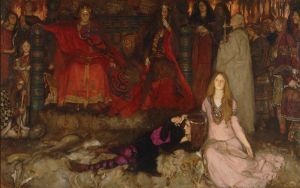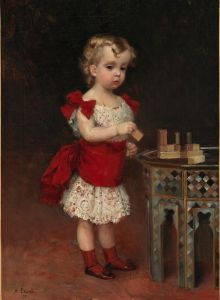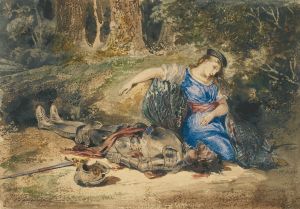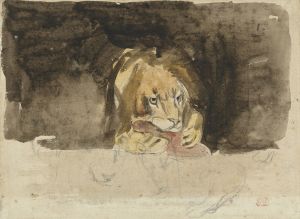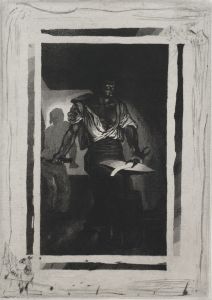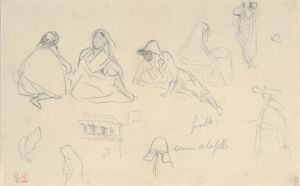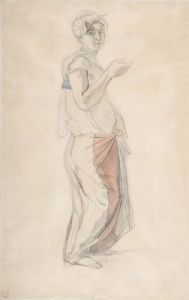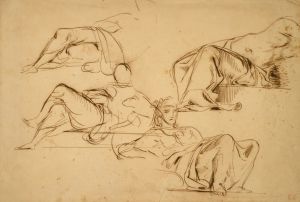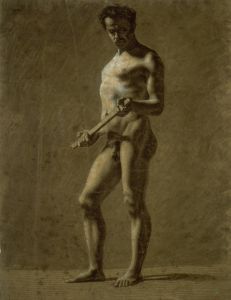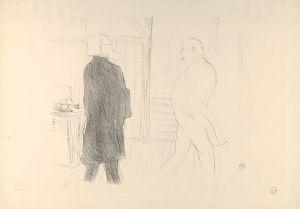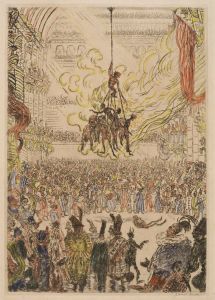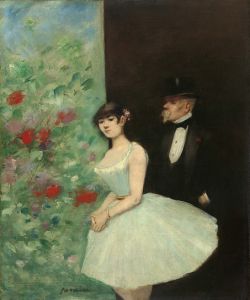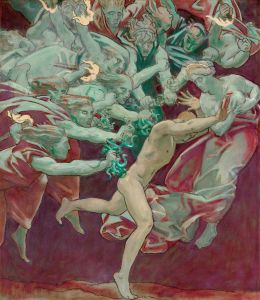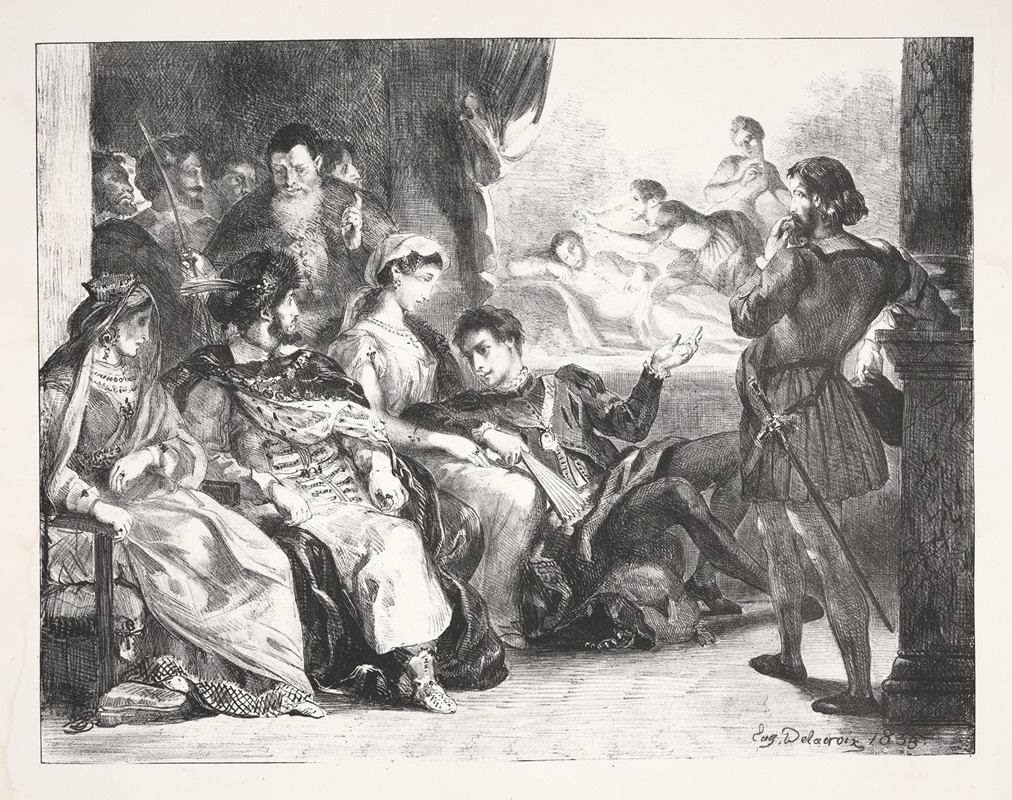
Hamlet has actors play the scene of his father’s poisoning
A hand-painted replica of Eugène Delacroix’s masterpiece Hamlet has actors play the scene of his father’s poisoning, meticulously crafted by professional artists to capture the true essence of the original. Each piece is created with museum-quality canvas and rare mineral pigments, carefully painted by experienced artists with delicate brushstrokes and rich, layered colors to perfectly recreate the texture of the original artwork. Unlike machine-printed reproductions, this hand-painted version brings the painting to life, infused with the artist’s emotions and skill in every stroke. Whether for personal collection or home decoration, it instantly elevates the artistic atmosphere of any space.
Eugène Delacroix, a prominent French Romantic artist, created the painting "Hamlet has actors play the scene of his father’s poisoning" in 1844. This artwork is part of Delacroix's series of paintings inspired by William Shakespeare's plays, reflecting his deep admiration for the playwright. Delacroix was known for his vibrant use of color and dynamic compositions, and he often drew inspiration from literature, history, and contemporary events.
The painting depicts a pivotal scene from Shakespeare's tragedy "Hamlet," specifically Act III, Scene II, often referred to as "The Mousetrap" or "The Play within the Play." In this scene, Prince Hamlet stages a play that reenacts the murder of his father, King Hamlet, in order to gauge the reaction of his uncle, King Claudius, whom he suspects of committing the crime. Delacroix captures the dramatic tension and psychological complexity of this moment, focusing on the interplay between the characters and their emotions.
Delacroix's interpretation of this scene is notable for its vivid portrayal of the characters' expressions and body language. Hamlet is typically depicted as intensely observing Claudius, whose reaction to the play is crucial to confirming his guilt. The actors in the play are shown performing the murder scene, while the court, including Queen Gertrude and other members of the royal entourage, watches with varying degrees of interest and concern. Delacroix's use of color and light enhances the emotional intensity of the scene, drawing the viewer's attention to the central figures and their interactions.
The painting is an excellent example of Delacroix's Romantic style, characterized by its emphasis on emotion, drama, and individualism. His work often contrasts with the more restrained and formal Neoclassical style that preceded it, favoring instead a more expressive and dynamic approach. Delacroix's interest in Shakespeare's works was part of a broader 19th-century European fascination with the Bard, as artists and writers sought to explore the depths of human emotion and experience through his timeless stories.
"Hamlet has actors play the scene of his father’s poisoning" is housed in the Louvre Museum in Paris, where it is part of the museum's extensive collection of 19th-century European paintings. Delacroix's Shakespearean paintings, including this one, have been praised for their ability to capture the essence of the plays and bring the characters to life through the medium of visual art. His work continues to be studied and admired for its innovative use of color, composition, and its ability to convey complex psychological and emotional narratives.
In summary, Eugène Delacroix's painting of Hamlet's play scene is a masterful interpretation of one of Shakespeare's most famous moments, showcasing the artist's skill in capturing the emotional and dramatic essence of the play. Through his vivid portrayal of the characters and their interactions, Delacroix invites viewers to engage with the timeless themes of guilt, revenge, and the search for truth that are central to "Hamlet."





